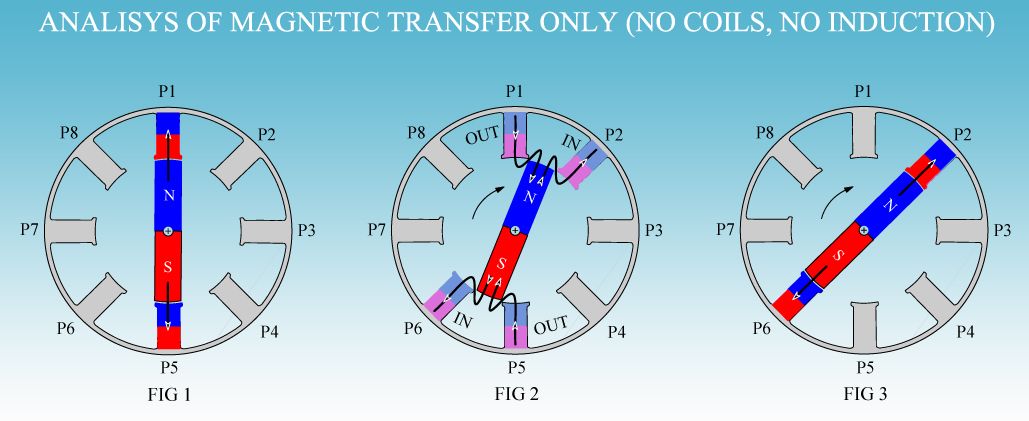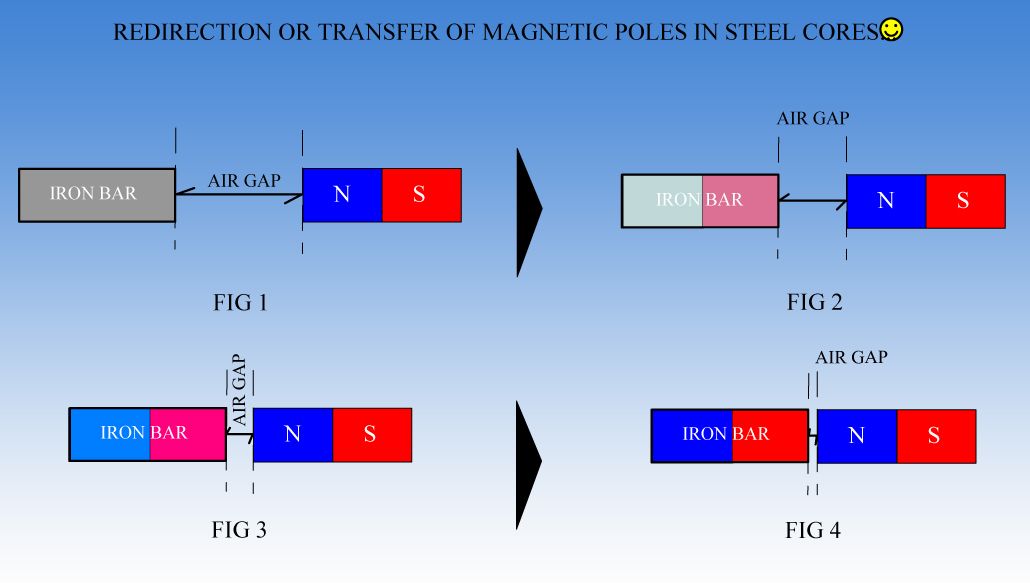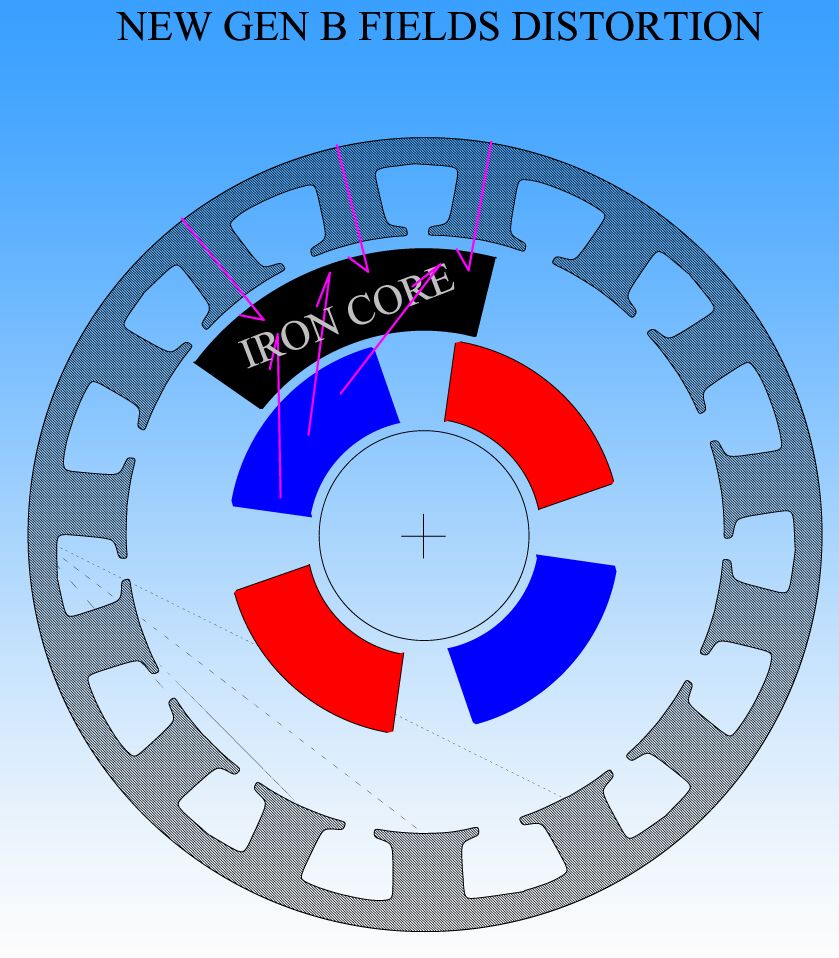About New Generator...
Thanks Sprocket, for posting Syairchairun comment here.
Now, related to:
I believe Lenz is present here as well, since this is still a Symmetrical Induction, a "Mirror Type" Induction , except that the Iron Elements are the ones rotating and NOT DIRECTLY the Source which are the Inner Exciters. On Typical Two Parts Generators the Exciter rotates, so Lenz acts against rotation. Here, by the time Lenz manifests between both Inner-Outer Coils...the Iron is REDIRECTING the Flux "ahead" of "Lenz Time" AS LONG AS a constant rotation is provided.
I don't know if any of You have noticed...but at certain times He is rotating Generator by hand...there comes points where it does get VERY stiff, and much force must be applied to "unlock" rotation. I believe this is due to stopping/not constant steady rotation of the Iron Cores, produces that the delayed Lenz "rushes outwards" and Locks Iron Rotor.
Look at it this way...The rotating Iron Cores (Rotor) are just an "Extension" of the Stators/Exciters Poles, plus they have the ability to "switch" magnetic polarity before getting a perfect alignment with stators poles, which, by the way, I believe are N-S-N-S...The Magnetic Polarity TRANSITION occurs in a "smooth" way at the "in-between" stator poles, that is when Lenz manifests fully IF steady rotation is present, then it throws a positive/favor/assist to rotation to next approaching pole...and so on.
This "Smooth Transition" will NEVER take place when we are rotating Stators/Exciters with a very close Air Gap DIRECTLY to the Generating Fields Cores, like it occurs in all Two Part Generators.
IMO, the Stator should be wound with just a bit heavier gauge and/or more turns (if possible) than OEM Stators, this will increase the magnetic field strength more than OEM, since some percentage would be lost in the REDIRECTION from the Iron Cores to the Generating Fields Cores...not much though, this is the point to reach a perfect balance, and nothing but real building and testing could find out exactly the suitable wiring spec's.
Another suggestion/possibility would be to turn/wind Stators with parallel bifilar or multi-filar of the same or smaller gauge as OEM, as this will strengthen the magnetic field as well, causing a more robust Induction.
Regards to All
Ufopolitics
Originally posted by Syairchairun
View Post
Now, related to:
I have to get how the magnetic flux runs without any effect of lenz law , it turns out lenz law provides positive efec , maybe tomorrow I will be releasing a video how the magnetic flux occurs in stator.
I don't know if any of You have noticed...but at certain times He is rotating Generator by hand...there comes points where it does get VERY stiff, and much force must be applied to "unlock" rotation. I believe this is due to stopping/not constant steady rotation of the Iron Cores, produces that the delayed Lenz "rushes outwards" and Locks Iron Rotor.
Look at it this way...The rotating Iron Cores (Rotor) are just an "Extension" of the Stators/Exciters Poles, plus they have the ability to "switch" magnetic polarity before getting a perfect alignment with stators poles, which, by the way, I believe are N-S-N-S...The Magnetic Polarity TRANSITION occurs in a "smooth" way at the "in-between" stator poles, that is when Lenz manifests fully IF steady rotation is present, then it throws a positive/favor/assist to rotation to next approaching pole...and so on.
This "Smooth Transition" will NEVER take place when we are rotating Stators/Exciters with a very close Air Gap DIRECTLY to the Generating Fields Cores, like it occurs in all Two Part Generators.
IMO, the Stator should be wound with just a bit heavier gauge and/or more turns (if possible) than OEM Stators, this will increase the magnetic field strength more than OEM, since some percentage would be lost in the REDIRECTION from the Iron Cores to the Generating Fields Cores...not much though, this is the point to reach a perfect balance, and nothing but real building and testing could find out exactly the suitable wiring spec's.
Another suggestion/possibility would be to turn/wind Stators with parallel bifilar or multi-filar of the same or smaller gauge as OEM, as this will strengthen the magnetic field as well, causing a more robust Induction.
Regards to All
Ufopolitics



 ...and here is when
...and here is when 





Comment